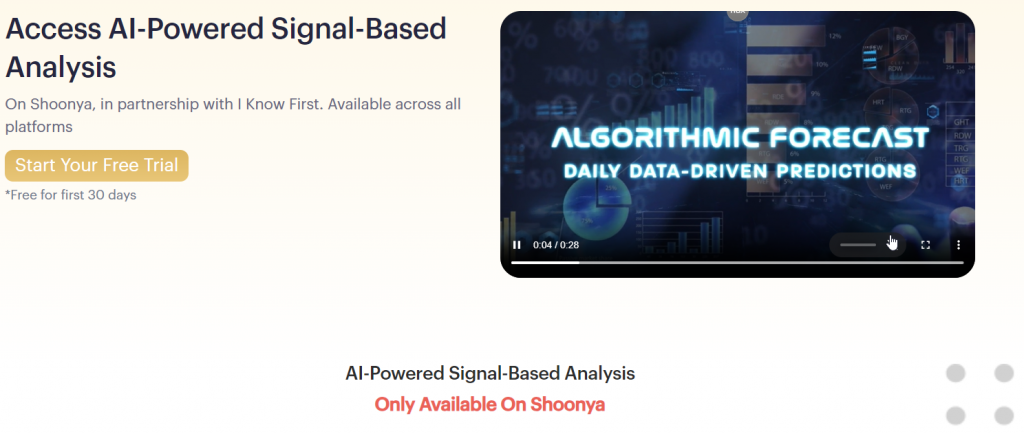20 Pro Tips For Deciding On AI Stock Analysing Websites
20 Pro Tips For Deciding On AI Stock Analysing Websites
Blog Article
Top 10 Tips To Help You Assess The Costs And Pricing Of Ai Trading Platforms That Predict/Analyze Price Of Stocks.
It is important to assess the cost and pricing of AI trading platforms that forecast or analyze price of stocks. This will help you avoid any hidden costs or charges. Pricing structures can differ widely, and understanding what you're paying for is essential to make an informed choice. Here are the top 10 strategies for evaluating price and cost.
1. Understanding the Pricing Model
Subscription: Be sure to check if a platform charges a fee per month or year and what's included with each stage.
Pay-per-use: Verify whether the platform charges you according to the amount of usage (e.g., number of trades, data requests, or predictions).
Freemium-model: Evaluate whether it is an initial free version with limitations in functionality, and charges for premium functions.
2. Compare Pricing Tiers
Check out the features included with each pricing tier.
Scalability: Make sure that the pricing tiers are in line with your requirements, whether you're a trader on your own, professional, or an institutional member.
Upgrade flexibility: Find out whether your plan is easily upgraded or downgraded when your needs change.
3. Evaluate Hidden Costs
Data charges are a matter of fact. Find out if you need to pay additional for access to premium data.
Brokerage Fees: Determine if your platform charges extra fees for integration or trade execution.
API usage: Check whether there are additional costs for API access or for high-frequency API use.
4. Demos, Free Trials, and Test Drives
Trial period. Check out platforms that offer trials or demos so that you can try their capabilities before you commit.
Review the restrictions on the free trial. It may not include all of its features.
If the platform is not suitable for you, be sure you can end the trial.
5. Be sure to check for discounts and promotions.
Annual discounts: Verify if the platform offers discounts on annual subscriptions when compared to monthly plans.
Referral programs: Check whether you are eligible for discounts or credits by referring others to the platform.
Request pricing for institutional customers if you are part of an enterprise with many employees.
6. Calculate Return on Investment
Cost vs. value: Assess whether the capabilities and forecasts offered by the platform are worth the price. Do you have time saved or make better decisions in trading?
Research the platform's success rate or testimonials from users to gauge its potential ROI.
Alternative costs Consider comparing the cost of the platform against the possible cost of not using it (e.g., missed opportunities, manual analysis time).
Review Cancellation & Refund Policies
Cancellation Terms: You may cancel your subscription without any hidden fees or penalties.
Refund policy Check whether the platform will reimburse you for unused portions.
Auto-renewal: Verify whether the platform auto-renews your subscription, and how you can decide to stop it.
8. Transparency of Pricing:
Clear pricing page - Be sure there aren't any hidden fees on the pricing page.
Customer Support: Contact customer support for clarification of any unclear pricing information or extra costs.
Terms of service: Read the conditions of service to be aware of any commitments to stay or penalties that are long-term.
9. Compare to Competitors
Comparison of features: Compare the pricing and features of the platform to the competition to ensure that you're getting the best deal.
User feedback: Find out what other people think about the platform and determine whether it's worth the cost.
Market positioning: Determine whether it is priced as an expensive, mid-tier or budget option and whether it is in line with your expectations.
10. Assess the long-term costs
Price increases: Find out whether and when the platform increases prices.
Additions to features - Check if new features come with your current plan, or if an upgrade is needed.
Costs for scaling: Ensure that the platform pricing is reasonable when you expand the volume of data or trading you require.
Bonus Tips:
Try out multiple platforms. Try them all out during a free trial to test their performance.
Negotiate prices: If you have a lot of customers or are part of an organization, request special pricing and discounts.
You should look into educational sources. Many platforms provide free educational materials or tools that can be great additions to the features they already have.
Use these guidelines to evaluate the cost and pricing for AI platform for analyzing and predicting stocks. Pick one that best meets your needs and falls within your budget. A good-quality platform will offer an appropriate balance of cost and performance, which will help you achieve the best results from your trading. See the recommended best ai stocks to buy for blog recommendations including stocks ai, ai stocks to invest in, ai copyright signals, ai for trading, copyright ai bot, ai trading software, ai stocks, ai stock trading app, trading ai bot, ai stock market and more.
Top 10 Ways To Evaluate The Latency And Speed Of Ai Stock Trading Platforms
For algorithmic, high-frequency and active traders in particular speeds and latencies are key factors when looking at AI platforms for stock forecasting and analyzing. A delay of just milliseconds can negatively impact profitability and trade execution. These are the top 10 guidelines to evaluate the speed and latency of these platforms:
1. Evaluate the Real-Time Data Feeds
Data delivery speed: Ensure that the platform is able to deliver real-time information with the least amount of delay (e.g. sub-millisecond latency).
Data source proximity - Check to see if the servers of your platform are near major exchanges. This will cut down on the speed of data transmission.
Data compression - Ensure that the platform is using effective data compression techniques to improve speed of data delivery.
2. Speed of execution test for trades
Order processing time The time it takes for the platform to process and execute trades once you have submitted an order.
Direct market access (DMA) Check if the platform offers DMA, which allows orders to be sent directly to the exchange without intermediaries.
Check the execution reports to see if they include timestamps of order confirmation fill, submission, and confirmation.
3. Review the responsiveness of the Platform
User interface (UI), speed Check the platform's response time to your inputs.
Chart updates: Make sure you check that charts and visuals are updated in real-time and without delay.
Mobile app performance. When you use an app for mobile, you should ensure it's running as fast and efficiently as the desktop application.
4. Look for infrastructure that is not low-latency.
Server Locations: Make sure whether the server used by the platform is that have low latency, located close to major financial exchanges, hubs or other sites.
Co-location service: See whether the exchange offers colocation services that allow you to host your trading algorithms on servers near to the exchange.
High-speed network: Check if the platform utilizes high-speed fibre-optic networks or any other low latency technology.
5. Backtesting and Evaluation of Simulation Speed
Historical data processing: Check how fast your platform processes and processes historical data.
The latency of the platform must be minimal enough to allow live simulations of trades in real time.
Parallel processing (or distributed computing) Learn what platforms use the concept of parallel processing or distributed processing in order to accelerate the complexity of calculations.
6. Evaluation of Latency in API
API response time: Determine how quickly the platform's API responds to requests (e.g., fetching market data, placing an order).
Rate limits: Determine if the API has reasonable rate limits to avoid delays in high-frequency trading.
WebSocket support: Find out whether your platform is using WebSocket protocols to support real-time, low-latency data streaming.
7. Test stability of the platform under load
High-volume trades Test the platform's flexibility and stability, try simulated high-volume scenarios.
Test your platform in periods of extreme market volatility.
Stress testing: Determine whether your platform offers methods for stress testing strategies in extreme circumstances.
8. Examine network and connectivity
Internet speed needs. Make sure that your internet connection meets standards for your platform to ensure the best performance.
Reliable Connections: To avoid downtime, check if the platform can support redundant internet connections.
VPN latency. If using VPN, VPN check to see if it introduces significant latency.
9. Make sure you are checking for features that speed up your performance.
Pre-trade Analytics: Be sure the platform has pre-trade analytics to improve the routing of orders, execution speed and other variables.
Smart order routing: Determine whether your application is using SOR to determine the most efficient and speediest execution location.
Monitoring of latency: Ensure that your platform permits you to analyse and track your latency live.
10. Review Feedback from Users and Benchmarks
Reviews from users: Perform user research to assess the platform's performance in terms of latency and speed.
Third-party benchmarks: Seek out independent benchmarks or reviews that compare the speed of the platform with competitors.
Case studies and testimonials: Find out whether there are any instances that prove the low-latency capabilities of the platform.
Bonus Tips
Trial period: Take advantage of the demo or trial version for free to test the platform's speed and latency in actual scenarios.
Support for customers: Make sure the platform has customer support to optimize the latency of your system or address other issues.
Hardware requirements: Determine if your platform requires specific hardware to ensure maximum performance.
Use these guidelines to assess the speed and latency of AI platform for stock prediction and analysis. Select one that is suitable for your trading needs and minimizes delays. Low latency trading platforms are vital for high-frequency algorithmic traders. small delays could negatively impact their profits. Check out the top rated trading ai for more recommendations including ai investment platform, incite ai, ai stock trading app, ai stock price prediction, ai trading platform, ai for investing, best stock analysis app, best stock analysis website, ai stock market, best ai stocks and more.